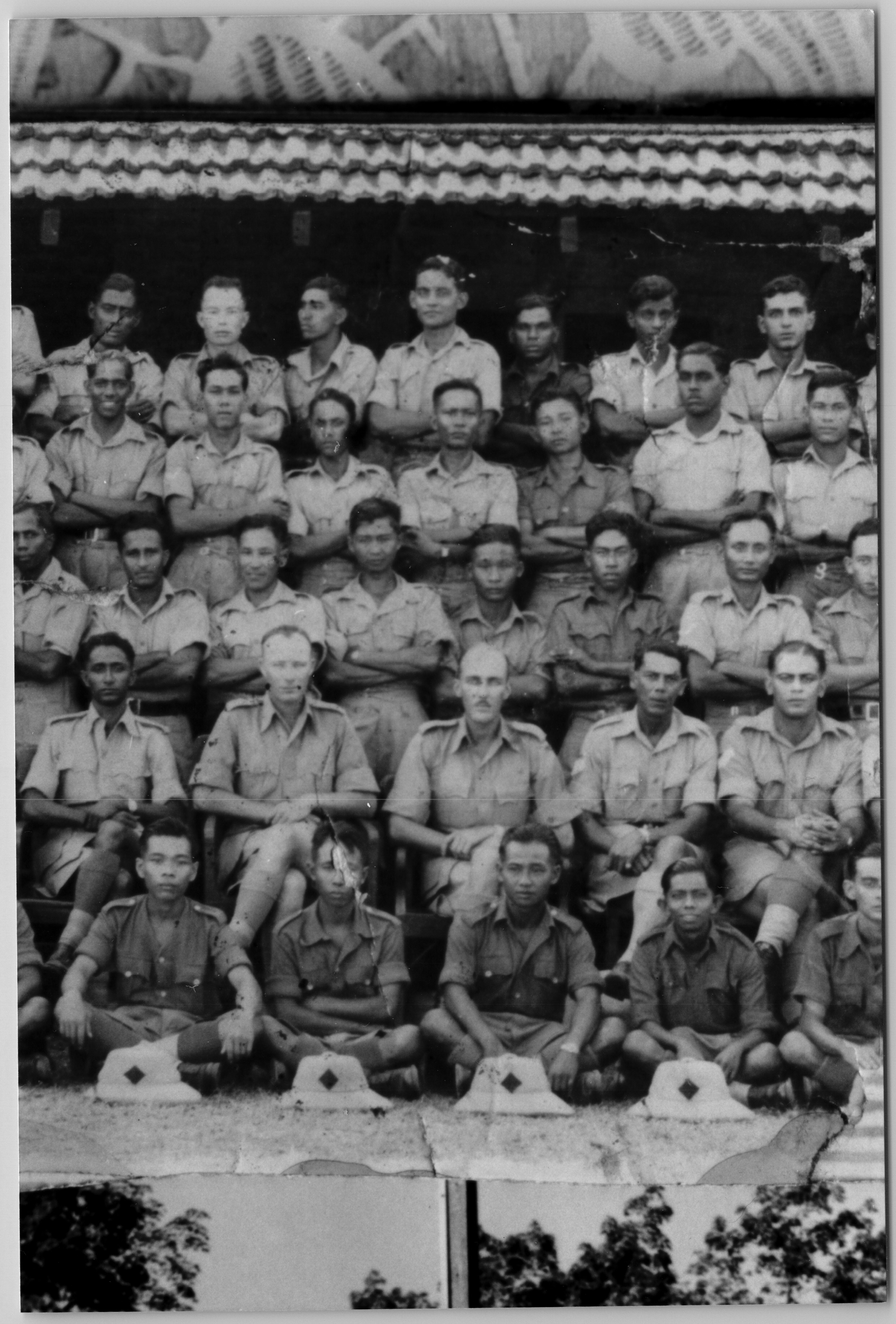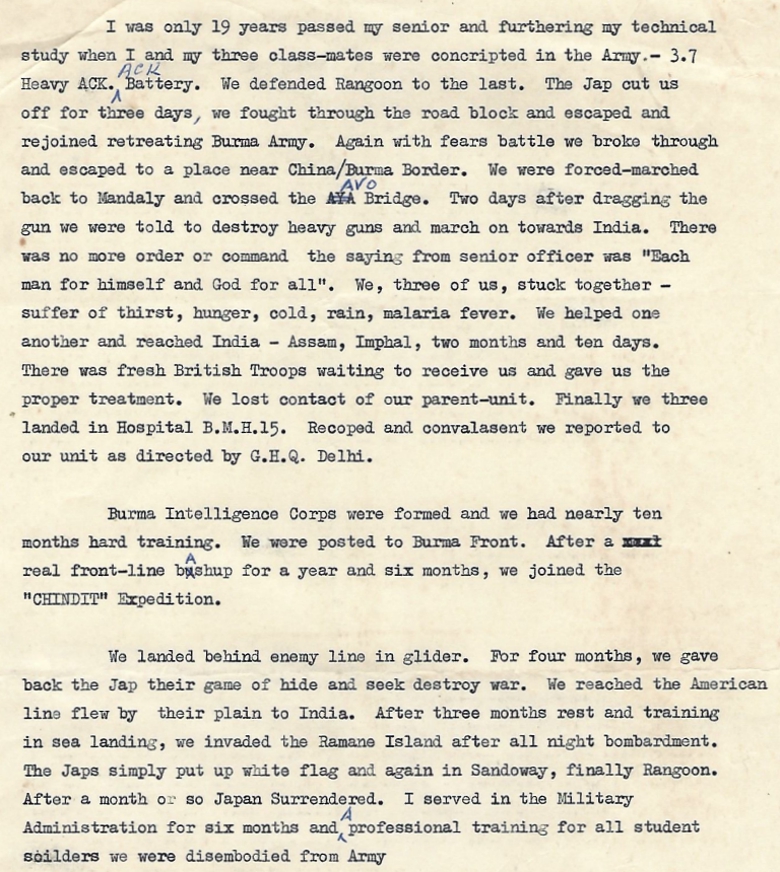Gunner A.N. Anthony, 1st H.A.A. Battery, B.A.F and Burma Intelligence Corps
1st H.A.A. Battery, Burma Auxiliary Force
At the age of nineteen, A.N. Anthony was conscripted into the Burma Auxiliary Force in 1941 and joined the 1st H.A..A. Battery, B.A.F. at Rangoon, where the Battery formed part of the 1st Heavy Anti-Aircraft Regiment, R.A., B.A.F. The 1st H.A.A. Battery was equipped with 3.7-inch anti-aircraft guns, under the command of Major H.H. Jackson.
He participated in the defence of Rangoon when Japanese launched air raids on the city on 23rd and 25th December 1941. The Japanese invasion of Burma began in January 1942 and progressed steadily northwards and by 6th March the Japanese were ready to seize Rangoon. The city was hastily evacuated and there was fierce fighting to the north at Taukkyan where the Japanese had placed a roadblock. After a desperate struggle to clear this, the Rangoon garrison got away when the Japanese withdrew in preparation for the capture of the city, thinking that the garrison was still there.
Gunner Anthony remained with the 1st H.A.A. Regiment as the Anglo-Indian army continued its fighting withdrawal towards Mandalay. The Regiment reached the city on 8th April 1942, arriving just in time to defend against a Japanese air raid. Further raids followed as the Japanese attempted to disrupt the British withdrawal. The Regiment was deployed to protect the Ava Bridge on 27th April before crossing and moving to Shwebo on the evening of 30th April. Faced with further withdrawal along the difficult track to Shwegyin, too narrow to accommodate the 3.7-inch guns of the 1st H.A.A. Battery, these and other guns of the Regiment were destroyed on 1st May.
Gunner Anthony and his comrades trekked to the Indian frontier where they arrived near Imphal on 17th May 1942. After a short stay here, enduring the monsoon rains in only tented accommodation, the personnel of the Regiment moved to Ranchi on 29th May. From here the men moved to Mhow, arriving on 16th June. Mhow now became the Depot for all B.A.F. men and they were all collected here. The 1st H.A.A. Battery went to Risalpur to be re-equipped before returning to Mhow. Gunner Anthony however was by now in hospital, recovering and convalescing after enduring the long retreat out of Burma.

Part of a group photo of what is possibly the personnel of the 1st H.A.A. Battery, B.A.F. - date assumed to be mid/late 1941, Rangoon. Compare this group photo of that of the 1st H.A.A. Regiment, B.A.F. here.
Burma Intelligence Corps
The Burma Intelligence Corps (B.I.C.) was raised in November 1942. The purpose of the B.I.C. was to provided guides and interpreters to support military formations on operations in Burma. The term "intelligence" was misleading as the purpose of the Corps was to help the military establish good relations with local Burmese in their area of operations and to act as interpreters. The B.I.C. was expanded during January 1943, overcoming a shortage of qualified men by disbanding the 1st H.A.A. Battery then at Mhow and the 5th Field Battery, B.A.F. at Ranchi.
Gunner Anthony was posted to the B.I.C. and undertook nearly months hard training before arriving at the Burma front. He served here before joining the Second Chindit Expedition. Four Burma Intelligence Platoons were attached to the Chindits for the operation, which took place between February and August 1944. Small parties of around six men of the Burma Intelligence Corps were attached to the intelligence sections of each Chindit column.
At the end of the operation, having returned to India by plane, and after three month’s rest and training, Gunner Anthony joined a B.I.C. platoon in the Arakan where he took part in the invasion of Ramree Island which took place between 14th January and 22nd February 1945.
Afte the Japanese surrender, Gunner Anthony, by now a Lance Bombardier, served in the post-war Military Administration of Burma. After receiving training in preparation for a return to civilian life, he left the Army in February 1947, shortly after Burma independence.
I am grateful to the family of Gunner Anthony for granting permission to share his story. Below is Gunner Anthony’s personal account.
31 January 2025
